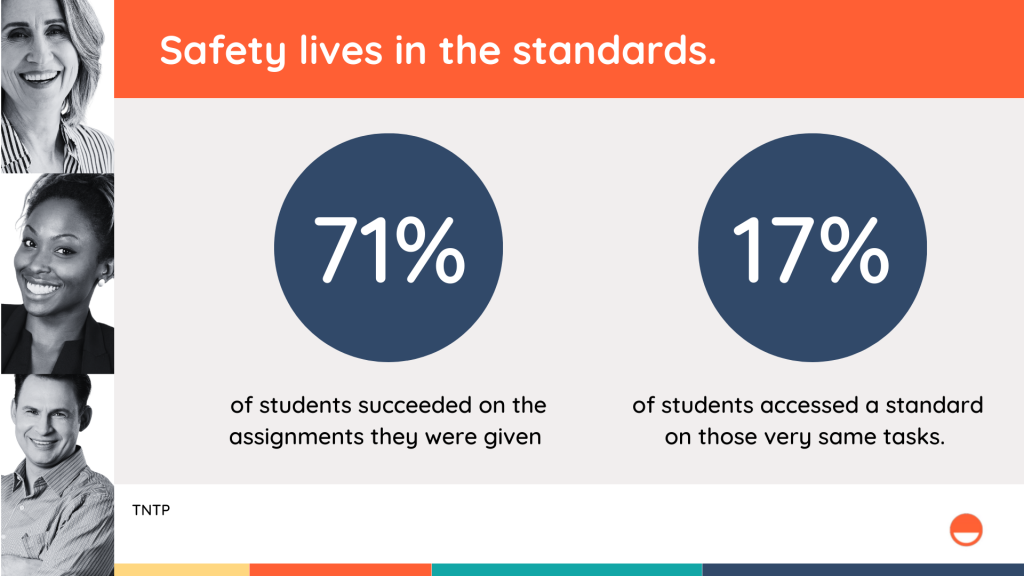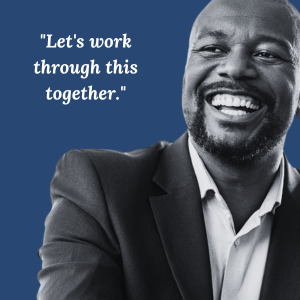In this post we will explore 4 different leadership styles. You will learn how these leadership styles can help you become a more effective leader in any situation.
The Leadership Dilemma
As a leader, you must address rigor if you want to improve student success. It seems obvious that all teachers would be teaching standards for their grade levels according to the pacing guides. However, reality in many classrooms is that standards based tasks are far from a given. Here is what the research says:

On the other hand, finding and keeping teachers is more challenging than ever. As a leader, you also need to ensure that your staff feels valued and appreciated and that they are happy with their work environment. Consequently, the news about teacher happiness is a challenge for leaders.

Leaders need to strike a balance between success and happiness. While it’s crucial to create high-performing classrooms that meet standards based expectations, it’s equally important to consider the needs and comfort of the teachers. Ultimately, a successful MTSS design solution should prioritize both people and performance to create schools that are not only effective and successful but also enjoyable, happy places to learn.
4 Leadership Styles
Each style is appropriate in different situations. Which style do you recognize? Is there one that sounds like it might be you? Let’s see…
Acquiescent Leadership
This style is highly agreeable and non-confrontational. The leader tends to avoid making decisions or taking a clear stance on issues. Instead, they opt to go along with the opinions and decisions of others. Because acquiescent leaders rely heavily on others for decision making, they avoid difficult conversations and conflict. As a result, problems simmer while they hope for the best. It may sound a bit negative, but there are times when this leadership style can be effective. Sometimes, a sit back and see approach is a good one. Often, acquiescent leaders prioritize maintaining harmony and avoiding conflict over achieving results. While acquiescent leadership can be effective in certain situations, it can also be a detriment in other situations. When it is applied as the primary leadership style, it leads to indecisiveness, lack of direction, and a failure to address important issues.
Acquiescent leadership works when:
- working with highly skilled and experienced team members that require little supervision or direction.
- encouraging these team members to share their opinions and ideas.
- the leader is new and/or learning about staff or initiatives.
Acquiescent leadership does not work when:
- developing team members who are not experienced enough to make informed decisions.
- the team is facing a crisis that requires a quick response.
- team members are taking advantage of the leader’s passive approach and not fulfilling their responsibilities.
- the leader is sacrificing their own values and goals in order to appease the team.

Affiliative Leadership
Affiliative leadership is a leadership style that emphasizes the creation of positive relationships between a leader and their team members. This style of leadership promotes harmony in the workplace. It encourages team members to work together. Affiliative leaders prioritize the needs and feelings of their team members. They work to build trust and strong relationships.
Listening to everyone before deciding to try to make everyone feel included and valued is a key characteristic of this style. It is important for them to recognize and reward good work. Their goal is to keep everyone happy and avoid conflict. Hence, affiliative leadership can be particularly effective in situations where team morale is low or when there is a need to rebuild trust between team. Subsequently, these leaders tend to downplay mistakes and focus on the positive instead of addressing issues head-on.
Affiliative leadership works when:
- building team harmony and morale.
- trying to heal organizational or personal rifts.
- managing a team with a high level of emotional distress.
- dealing with sensitive or personal issues that require a compassionate approach.
Affiliative leadership does not work when:
- quick and decisive action is needed.
- teams need clear direction, guidance and accountability.
- there is a need to address and resolve conflicts directly.
- team members require more structure and discipline.
- the leader needs to challenge employees to achieve higher performance standards.
Authoritative Leadership
Authoritative leadership is a style of leadership where the leader sets clear goals and expectations for their team. They provide them with the necessary guidance and resources to achieve those goals. The leader is confident in her decision-making abilities. Decisions are based on their own knowledge and expertise. They give clear direct instructions. Taking responsibility and making changes is not a challenge for them. These leaders hold people accountable and are unafraid to make the final decision when there’s a conflict.
Above all, the focus is on performance. High levels of accountability and responsibility are key characteristics. This leader knows she is ultimately responsible for the success or failure of the team. Input and feedback from their team members are used to adjust their plans and strategies. However, if the leader wants to empower and develop their team members or when she wants to foster a positive culture, she may need to adapt her style.
Authoritative leadership works when:
- there is a crisis and quick and decisive action is needed.
- a new or inexperienced team requires clear direction and guidance.
- working with a team that lacks motivation and accountability.
- the leader has expertise in an area that the team does not.
- dealing with a team that may be resistant to change.
Authoritative leadership does not work when:
- Collaboration and teamwork are required.
- Creativity and innovation are essential because of changing environments.
- Team members need to feel valued and respected.
- The leader does not have all the answers or expertise.
- The team members have a high level of expertise and experience.
Active Leadership
Active leadership is a style of leadership that involves being engaged, hands-on, and present in the day-to-day operations of an organization or team. Rather than delegating tasks and responsibilities and stepping back, active leaders take an active role in guiding and directing their team towards success. They lead by example, setting the tone and culture for their organization or team.
Effective communication, collaboration, problem-solving, and decision-making skills are key characteristics. This style requires a high level of emotional intelligence, empathy, and the ability to motivate and inspire others. Active leaders are not afraid to roll up their sleeves and get their hands dirty to achieve their goals. They are invested in the success of their team and are committed to creating a positive and productive work environment. However, is the leader lacks the knowledge to make the best decisions this style can be a hindrance. None of us knows everything, but active leaders should invest in their own development related to any initiative they are leading. By doing so, they avoid missteps where they can.
Active leadership works when:
- new initiatives or projects are being implemented that require strong leadership to drive success.
- team members need inspiration and guidance and support to reach their full potential.
- leading by example is necessary to establish a culture of accountability and high performance.
- building strong relationships with team members is critical to the success of the organization.
Active leadership does not work when:
- The team is highly experienced and requires minimal guidance.
- The leader lacks the necessary expertise in the specific area.
- The leader is micromanaging and not allowing team members to take ownership of their work.
For a video version of this post click here.







